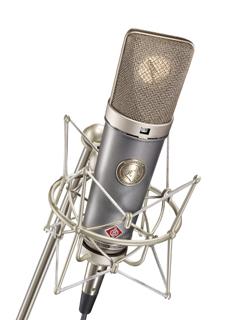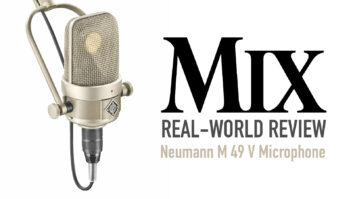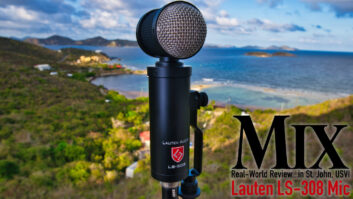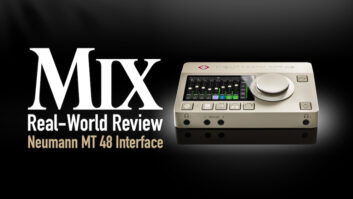
The TLM 67 takes its lineage from the U67, first released in 1960 and meant to replace the coveted U47.
Neumann remains on the technical forefront of microphone design, with its range of digital mics and reissues of legacy tube mics sporting new-age simulation circuits. Neumann’s most recent old-to-new release is the TLM 67, a transformerless version of the original U67 tube mic that was released in 1960 as a replacement for the über-famous U47. The TLM 67 uses a K67 capsule and a special circuit designed to simulate the characteristics of the EF 86 tube found in the original U67. The TLM 67 offers three polar patterns (omni, cardioid and figure-8), and has a -10dB pad and a highpass filter dropping 6dB per octave starting at 250 Hz in cardioid and 180 Hz in omni.
In My Room
I have to preface this review by saying that I’m skeptical of tube simulations in general after being disappointed a number of times. That said, after listening to the TLM 67 in a number of applications, it pleasantly surprised me. This mic sounded great no matter where I put it.
I first heard it in use as a mono, omnidirectional drum overhead placed about eight feet up and four feet back from a drum kit in a medium-sized room with a concrete floor. Powered by an SSL 4000 E Series mic preamp, the TLM 67 captured the kit perfectly, with plenty of bottom end, a balanced perspective of the snare and toms, and crystal-clear renditions of the cymbals and the “room vibe.” A little crunch provided by the SSL’s channel compressor brought out even more room, making it a part of the drum mix that completed the track. On another session, I put the mic four feet in front of the kit and about four inches off the floor, and set it in the cardioid pattern. The kick drum’s presence was stellar and offered lots of “in your chest” boom, making the TLM 67 a great companion to the Shure Beta 52 inside the drum.

The TLM 67 offered the perfect portal for an acoustic guitar recorded to Pro Tools through Apogee Rosetta 800 converters. I placed it about a foot in front and aimed at the soundhole at the guitar’s bridge. Flipping it over to the figure-8 polar pattern made the mic more directional and took out some of the boom from the “south” end of the guitar. I liked being able to play with the polar patterns and roll-off during the recording process, which gave me numerous tonal variations.
The mic excelled on tenor sax through a Neve VR’s mic preamp. In cardioid, it was tonally rich from top to bottom with great transient response and gave the instrument a very musical presence in the track. It was equally effective on male vocals. I regularly hear test mics on a great vocalist who is tough to record due to his strident tone, and the TLM 67 worked where other condensers have failed miserably. His tone was balanced with a pleasant bottom end and a sense of tameness in regards to edgy transient peaks.
I’m Sold
The TLM 67 does a great job of providing the promised response and roundness of tone that you’d expect from a tube mic. Is it like the original? There are too many variables involved to say “yes” as every U67 has its own personality. However, the TLM 67 is a great mic and an all-round winner across a variety of applications. Although you have to be careful not to use it in ultrahigh-SPL situations (its specs promise 5% THD at 125 dB in cardioid mode), it is an able transducer when used as a room mic placed six feet over a drum kit or about six feet in front of a guitar amp. It was fantastic on acoustic guitar and a winner on sax and male vocals. The price is high, but if you’re looking for an able high-end mic for your locker, this could be the one.
Kevin Becka is Mix‘s technical editor.







